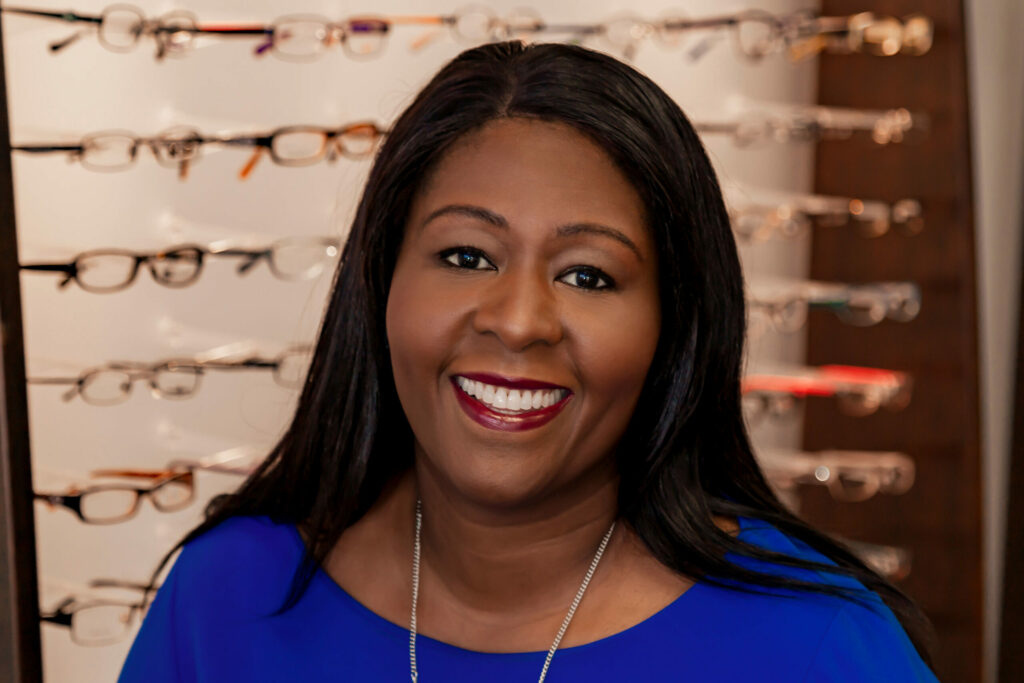What to do when patients have unrealistic expectations?

In our series on Patient Satisfaction, we’ve explored the importance of exceeding patient expectations and the key strategies to succeed in practice. But what happens when your patient has unrealistic expectations? How do you handle an impossible request? Can you truly satisfy such a patient?
Let me ask you, have any of these scenarios happened to you?
- A presbyope insists on single-vision glasses for all their vision tasks. They don’t want bifocals (with or without a line) or progressives. They just want their glasses to work like they did 20 years ago, and expect you to make that happen. What do you do?
- A patient demands a redo of their glasses for the third time because they still don’t like the frame. They blame your optician for not explaining that the first frame was too big and the second was the wrong color. What do you do?
- A parent refuses to pay your service fees because they disagree with your diagnosis. They claim there is nothing wrong with their daughter’s vision, even though she’s +3.50 OU. Mom asserts, “No kid of mine will wear glasses!” and calls you out for not being a “real doctor.” What do you do?
- A high myope with corneal hypoxia and neovascularization insists on contacts they can sleep in, because their image as a local TV news anchor is too important to wear glasses. They also refuse to wear daily disposables because of the “hassle.” What do you do?
- A glaucoma patient who continually no-shows for follow-up exams keeps asking for prescription refills, despite being blind in one eye and barely hanging on in the other. What do you do?
These scenarios may sound extreme, but they are all too familiar in optometry practices everywhere. If you haven’t encountered a situation like this yet, you likely will. So, how do you manage patients with unrealistic expectations? How do you stay professional while protecting your practice?
The short answer is: You can’t always satisfy everyone. However, you can effectively manage demanding patients and their expectations by following these three steps:
1. Create a Standard Operating Procedure (SOP) Manual for Your Office
Standard Operating Procedures (SOPs) is a step-by-step instructional manual that outlines how tasks should be completed to ensure consistency and efficiency. These written guidelines establish a clear framework for both employees and patients, defining the responsibilities of each party throughout the patient care process.
Having SOPs in place sets boundaries that protect you and your staff from succumbing to the unreasonable demands of difficult patients. For example, your SOP can define how many times you will remake glasses at no cost or clarify the types of contact lenses you will prescribe based on medical necessity.
Example: One practice I worked with implemented a policy that glasses could only be remade once within 30 days, and only if it was due to a valid prescription error. If a patient changed their mind about frames, additional fees applied. This SOP empowered the staff to handle such situations confidently and fairly, reducing unnecessary stress on the team.
2. Train Your Team on the SOP Manual
Your team is only as effective as their training. For your SOP to work, your staff needs to be well-versed in the policies and know how to apply them consistently. While this training may require an upfront investment of time and money, it is essential for maintaining a harmonious practice environment.
Well-trained employees can confidently enforce policies, reducing the need for you to step in every time a patient has an unreasonable request. With proper training, your team becomes the front line in managing patient expectations, leaving you free to focus on care.
Example: One of my colleagues held monthly staff meetings to review a different section of the SOP manual each time. This regular training kept the policies fresh in everyone’s mind and allowed the staff to brainstorm solutions for any new situations that might arise.
3. Stick with It and Do Not Compromise
Consistency is key. Once you have established SOPs and trained your staff, you must enforce them without exception. If you make exceptions for one patient but not another, you create confusion and undermine the policies. This inconsistency erodes your team’s confidence and encourages patients to push boundaries.
At the same time, it’s important to build flexibility into your SOPs for handling delicate situations. Assigning an office manager or another trusted individual to handle exceptions ensures that decisions are made fairly, without disrupting the overall structure of the practice.
Example: In a scenario where a patient repeatedly requested unnecessary contact lenses despite contraindications, the office SOP dictated that the optometrist would explain the risks in detail and document the conversation. If the patient still insisted, the issue would be escalated to the office manager, who could reinforce the doctor’s decision while maintaining the patient relationship.
SOPs for Freedom and Success
SOP manuals are your secret weapon for managing unrealistic patient expectations and ensuring a consistent, positive patient care experience. By outlining clear procedures and training your team to follow them, you free yourself from daily interruptions while improving patient satisfaction.
With SOPs in place, you’ll no longer have to deal with every difficult situation personally. Instead, your team will handle them confidently using the guidelines you’ve established. This creates peace of mind and allows you to focus on what matters most—caring for your patients.
Real-Life Example: Starbucks SOPs and Consistency
Starbucks is a prime example of a company that relies on SOPs to maintain consistency and exceed customer expectations. Whether you order a latte in New York, Paris, or Tokyo, the experience is nearly identical. This consistency is key to Starbucks’ success. Their SOPs ensure that baristas follow the same process for every order, every time, reducing errors and creating a predictable customer experience.
Your optometry practice can achieve the same level of consistency by implementing SOPs. When patients know what to expect, they are more likely to trust your care and return for future visits.
A Call to Action: Ready to Take Control of Your Practice?
At Optometry Divas, we believe that success comes from combining clinical excellence with strong practice management. If you’re ready to streamline your operations, manage patient expectations, and take your practice to the next level, we’re here to help.
Join our CEO of YOU® Business Coaching Program and receive personalized coaching to create your own Practice Success Blueprint. Our program will help you develop and implement SOPs that will empower your team, elevate patient care, and give you the freedom to focus on growing your business.
Click here to sign up today! CEO of YOU® Private Practice Membership






Responses